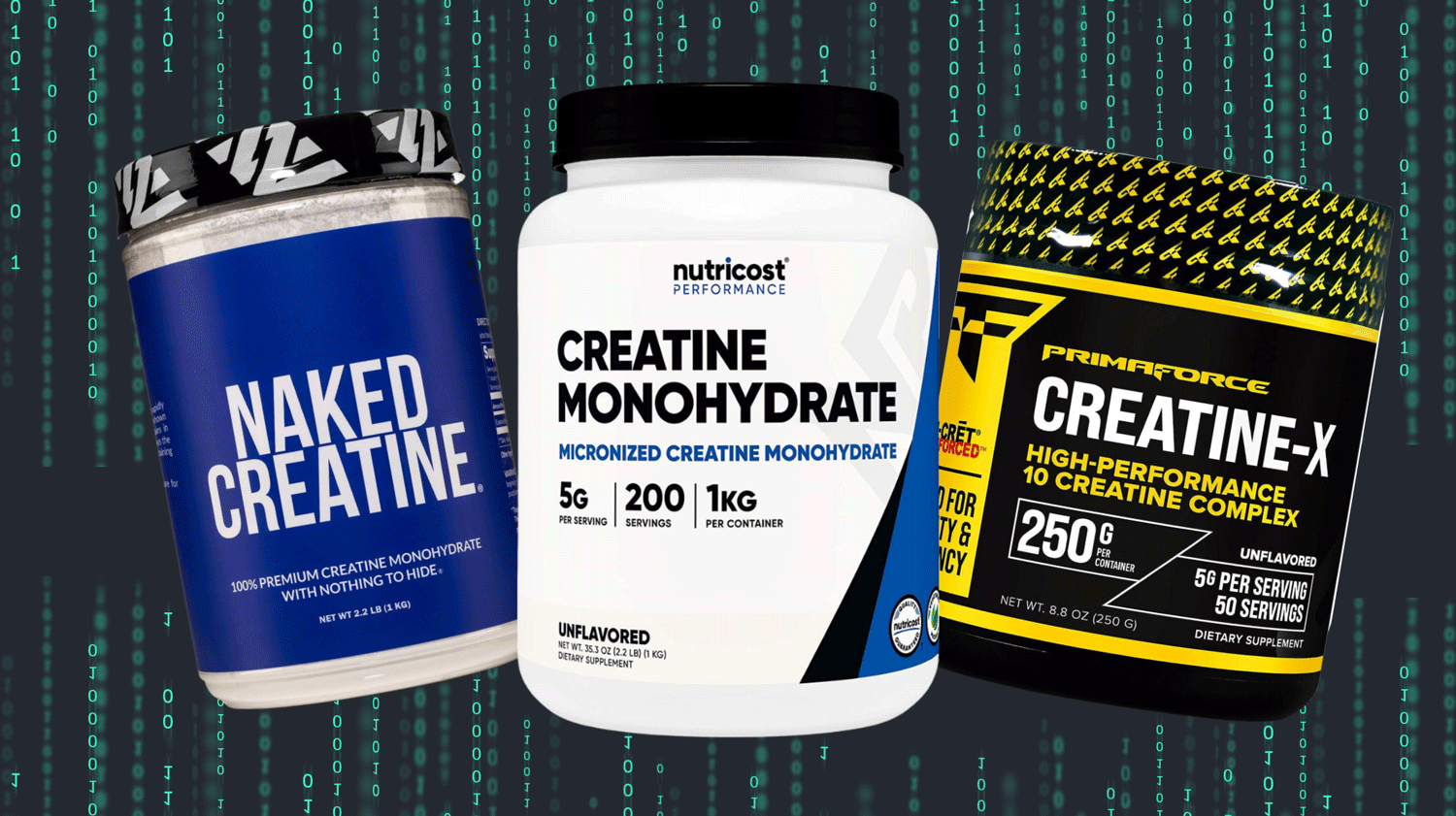9 Different Types of Creatine & Their Benefits


Creatine’s popularity has led chemists and supplement companies alike to develop better and more effective versions to provide consumers with the best possible solution for their fitness needs.
In this guide we take a look at 9 types of creatine and their benefits, which range from better solubility and absorption to increased effectiveness in endurance and muscle recovery.
The profound impact of creatine on enhancing athletic performance has been recognized by scientists dating back to the early 20th century. However, it was the 1992 Summer Olympics in Barcelona that truly propelled creatine into the mainstream spotlight.
At this prestigious event, several gold medalists attributed their success to this potent supplement, sparking a surge in its popularity. Ongoing controlled trials solidified its effectiveness, and by the time the 1996 Olympics in Atlanta rolled around, an astounding 80% of participating athletes acknowledged incorporating creatine into their training regimens.
Fast forward to today, and creatine has achieved widespread recognition, attracting not only elite athletes but also weekend warriors seeking to optimize their performance. Nevertheless, this surge in popularity has led to the development of numerous creatine variations, each bearing more scientifically infused names than the last.
But what exactly do these different creatine formulations signify for you? Rest assured, we have diligently sifted through extensive research to provide you with a comprehensive breakdown of all the essentials to consider before integrating creatine into your supplement options.
This overview covers the various types of creatine on the market, their benefits, distinctions in formulations, and dosage recommendations aimed at elevating your performance to new heights.


1. Creatine Monohydrate
2. Creatine Hydrochloride (HCL)
3. Buffered Creatine
4. Creatine Ethyl Ester
5. Creatine Magnesium Chelate


6. Creatine Citrate
Creatine Citrate modified the creatine molecule by fusing creatine with citric acid. The primary benefit of this fusion is an increase in water solubility. It is most desired by people who want their creatine to fully dissolve into their preferred liquid, with no sediment or clumping.
Due to the presence of citric acid, the actual creatine content per serving is reduced, which means that users will need to consume more Creatine Citrate to match the benefits typically derived from smaller servings of other forms of creatine, like creatine monohydrate.
In terms of pricing, you can expect to pay more for Creatine Citrate then the more traditional Creatine Monohydrate.
7. Creatine Anhydrous
Creatine Anhydrous is developed by extracting the water molecule in the monohydrate structure. What remains is Creatine Anhydrous, a substance that boasts a heightened concentration of pure creatine. This enhanced purity translates to a slightly elevated creatine content per gram, offering users a more concentrated dose with each serving.
Financially speaking, Creatine Anhydrous positions itself in a competitive bracket. Its price range is largely on par with Creatine Monohydrate, making it a compelling choice for discerning fitness enthusiasts and athletes.
Those who prioritize purity in their supplements, without a significant deviation in cost, might find Creatine Anhydrous to be an optimal selection.
8. Creatine AKG
Creatine Alpha-Ketoglutarate, often abbreviated as Creatine AKG, is a blend of creatine and the salt derivative of alpha-ketoglutaric acid. By merging the energy-enhancing properties of creatine with the metabolic power of alpha-ketoglutaric acid, users could experience a more pronounced and synergistic boost in both muscle growth and energy metabolism.
The potential of Creatine AKG to serve as a powerhouse in the realm of sports nutrition and bodybuilding is intriguing. The fusion aims to optimize nutrient uptake, improve workout efficiency, and potentially expedite recovery times.
However, while this potential sounds compelling, definitive research that conclusively establishes its superiority is still unfolding.
If you want to experience these benefits first hand, be prepared to pay a premium. Creatine AKG is toward the top of the price range for creatine supplements.
9. Creatine Pyruvate
Creatine Pyruvate is formed from creatine and pyruvic acid, two potent compounds individually recognized for their roles in energy metabolism and muscular function. By combining the energy-boosting properties of creatine with the metabolic benefits of pyruvic acid, users could experience a more sustained and efficient energy output during prolonged physical activities.
However, while the theoretical benefits of Creatine Pyruvate are promising, studies on creatine pyruvate are still in early stages. Preliminary findings are definitely promising, but the definitive verdict on its distinct advantages has yet to be established.
From a consumer standpoint, Creatine Pyruvate’s price point is notably higher than some other forms. This elevated cost is a testament to the potential advantages that pyruvic acid brings to the table.


In Conclusion
Creatine Monohydrate might be the most recognized and trusted form, but the world of creatine is vast and varied. Each variant offers its unique set of benefits, tailored to different needs and preferences. There are not bad choices, but it’s important to consider what the specific benefits are before investing additional funds for your creatine.
As with any supplement, it’s crucial to consult with a healthcare expert and consider individual goals before making a choice.Creatine Hydrochloride
Your Creatine Questions… Answered.


WHAT IS OUR #1 CREATINE SUPPLEMENT?
Check Our Ranking of the 12 Best Creatine Supplements for 2023

